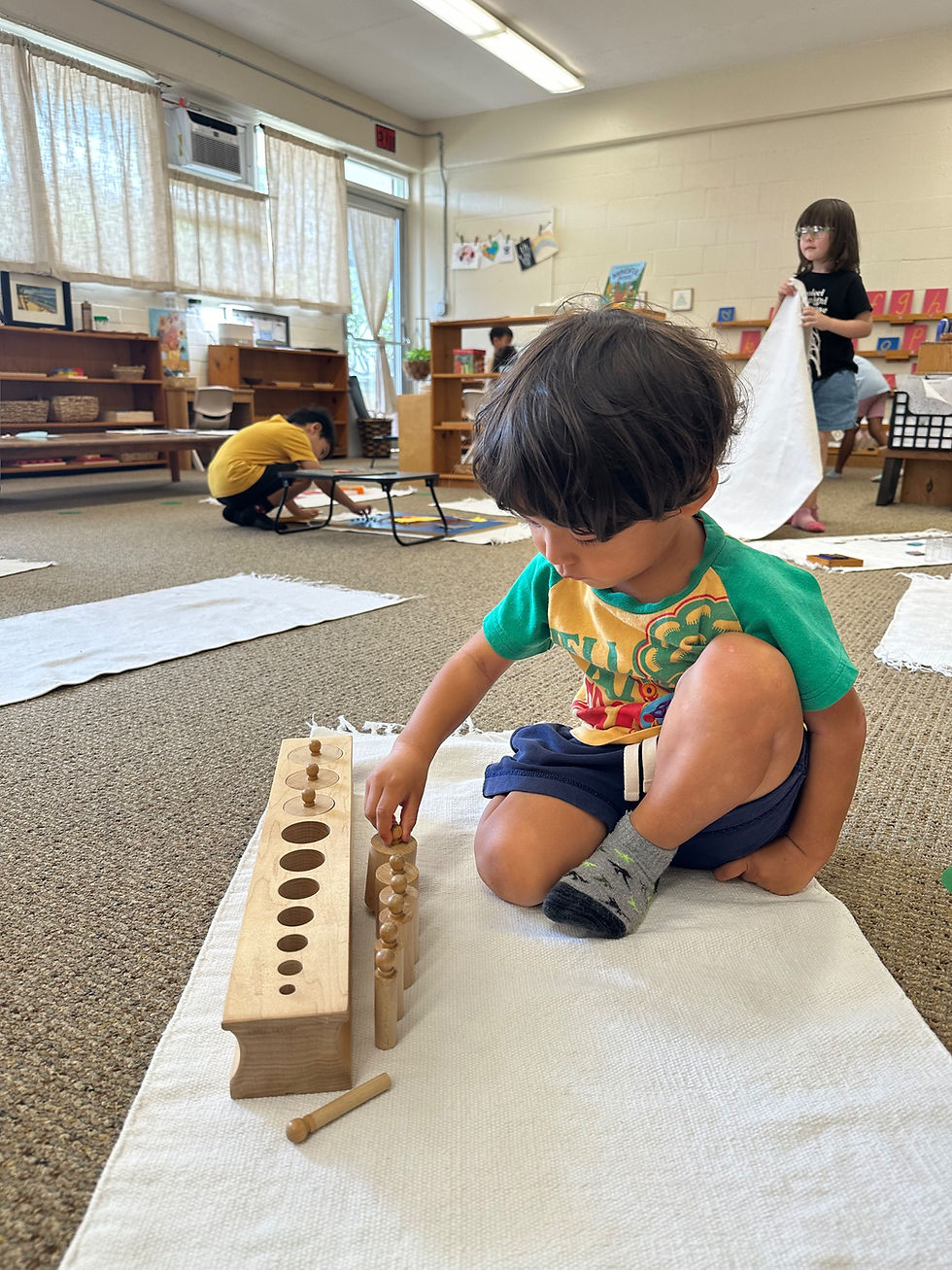Let's Play the Silence Game...
- Jyo Bridgewater

- Sep 2, 2025
- 2 min read
Some of my sweetest memories as a teacher (including in Room 1 at MCS thirty years ago!) center around playing Dr. Montessori’s Silence Game. Described in The Secret of Childhood (pub.1939; see below), this game was engaging to every age I was lucky enough to teach, from three-year-olds to graduate students. It seems that we can all do with a little quiet time!

In Montessori education, the Silence Game is part of the Practical Life area (more on that in the next Montessori Matters) and is another example of Dr. Montessori’s prescience in giving children direct, guided experience in listening, focused attention, emotional regulation, peacefulness, and calm. I remember with specificity the wonder on some children’s (and adults’!) faces as we “grew our silence” over the course of the year, developing the ability to move into, and out of, stillness, and how healing it could be. As a guide, I could say, “I can see how unhappy/angry/frustrated you are right now…remember how it felt when we were playing the Silence Game? We can try to find that peace again right now! Yes, I can see you trying to breathe slowly and quietly, and I think your cheeks aren’t as red as they were! It isn’t easy is it? But I see it happening! Wow!”

Of course, individuals and groups vary greatly and it takes work to play any game proficiently. In the graduate classes I taught, silence was very difficult for some and it took many sessions to actually silently experience a single day’s ending as Frederick Buechner had written about in an essay we were studying. We had to first start with listening to music while watching the sunset…we didn’t make it through 30 seconds of Pachelbel’s Canon in D for weeks, but we invariably got there in the end, and the silence game became a treasured part of our class culture.






